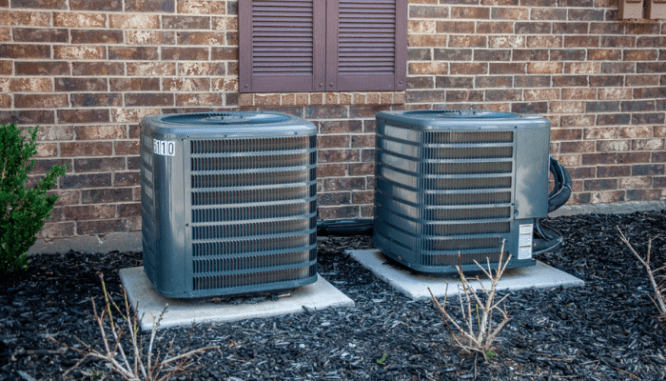Here’s What You Should Know About the HERS Index as a Homebuyer
- Published on
- 4 min read
-
 Evette Zalvino Contributing AuthorClose
Evette Zalvino Contributing AuthorClose Evette Zalvino Contributing Author
Evette Zalvino Contributing AuthorEvette is just your average HGTV fan who dreams of having a home worthy of being on one of those shows. When she isn't writing for HomeLight, she's working at her local real estate office. In her downtime, you'll find her searching for the next great hiking trail in her area.
Doesn’t it feel like everything you buy has some kind of energy efficiency rating? Appliances have the ENERGY STAR® symbol, which provides environmentally conscious consumers and businesses with unbiased information when purchasing products. You can check and compare the fuel economy ratings when buying a car. You can even tailor your diet so you’re eating food that doesn’t demand a lot of energy to produce!
But what about buying a house? Is there a way for buyers to see how energy-efficient an entire house is?
Yes, there is! It’s called the home energy rating system Index, or HERS Index.
Never heard of it before? You’re probably not the only one, but don’t worry. We’ll tell you what you need to know!

What is the HERS Index?
The HERS Index is used to measure how energy-efficient a home is. It’s a rating system that was created by the Residential Energy Services Network (RESNET) in April 1995. RESNET created the HERS Index to set a national standard for home energy rating systems as well as energy-efficient mortgages.
Valerie Briggs, the communications director at RESNET, explains the importance of having your home’s energy efficiency rated. When you’re planning on buying a house, your monthly budget is going to be more than just a mortgage payment. Energy costs play a big role in how affordable a home will be and it’s a big consideration people often forget about.
That’s where HERS Indexing is key. A home with a low HERS Index score means it’s going to be more energy efficient than a home with a higher HERS Index score. A lower score means the home is going to be more environmentally friendly, it’s going to have lower energy costs, and the home will be more comfortable to live in.
The cost to have your home rated is going to depend on the square footage of the home as well as the climate zone and any specific additional tests you need or want. The cost can range from $150 to $250, and any additional certifications will cost between $50 and $100 each.
Find a HERS rating company near you.
What is the rating scale, and what does it mean?
To calculate a home’s HERS Index rating, there are two elements that a certified RESNET HERS rater looks at: the home’s energy efficiency, which means how much (or how little) energy the home needs to operate normally, and how much clean energy the home creates through solar panels, passive solar energy, or wind energy.
To figure out a home’s HERS Index Score, a RESNET HERS Rater will come to the house and evaluate its energy efficiency when compared to a designed-model home (a “reference home”) with the same dimensions. This means your score will be relative to the shape, size, and style of the home you’re living in.
The HERS Index rating will fall between 0 and 150. Unlike other rating systems, the higher the HERS Index rating is, the less energy-efficient the home will be; the lower the HERS Index rating is, the more energy efficient the home will be.
Let’s say the HERS Index rater gives your home a score of 70. This means your home is 30% more energy-efficient than the reference home. If a house has a HERS Index score of 130, it’s going to be 30% less efficient than the reference home.
“A home with a HERS Index Score of 70 is 30% more energy efficient than the RESNET Reference Home. A home with a HERS Index Score of 130 is 30% less energy efficient than the RESNET Reference Home.”
A typical existing home in the United States should have a HERS score of about 130, but newly built homes will have a rating of 100, meaning the house is as efficient as RESNET’s reference home because no energy has been used yet. The national average in 2019 was 59, which is pretty awesome!
How does someone become a HERS Index rater?
Certified RESNET HERS raters are trained by an accredited Home Energy Rating Provider. During the rigorous training, they learn how to inspect and evaluate the energy features of the home, assign a home energy rating to a home, and make recommendations for the homeowner regarding what improvements can be made to improve the home’s energy efficiency.
You can find home inspectors and home appraisers who are certified RESNET HERS raters.
“Those wanting to become certified RESNET HERS Raters must undergo rigorous training, testing, assessment, professional development, and adhere to stringent quality assurance standards,” Briggs clarifies.
She adds, “A collaboration between RESNET and the Appraisal Institute, AI professionals and trained green appraisers can access, for free, an appraisal portal, with important information about the energy efficiency of more than 2.8 million HERS-rated homes in the US.”

What do raters look for when indexing a home?
Because the HERS Index score tells buyers how energy efficient the home is, the rater will look at features that ultimately affect the utility bills. These areas include:
- Exterior walls (both above and below grade)
- Unconditioned floors, such as in basements and garages
- The ceiling and roof
- The attic, foundation, and crawl space
- Windows, doors, ductwork, and vents
- The HVAC system, water heating system, and thermostat
- Areas where air can leak via heating and cooling distribution systems
HERS raters will also perform some common tests to evaluate a home’s energy efficiency.
Airflow verification
This will measure the velocity of the air flowing through the home’s air duct system during the air conditioning cycle. This test is used in conjunction with refrigerant charge verification.
Note: A refrigerant is necessary for air conditioning, freezing air, and refrigeration. The refrigerant material is located inside copper coils within the air conditioner and absorbs the heat from air inside a room. It then converts low-pressure gas into a pressurized liquid.
There are three types of refrigerants:
- Chlorofluorocarbons (CFCs), including R12: Harmful gas that contributes to the greenhouse effect. Production ceased in 1994.
- Hydrochlorofluorocarbons (HCFCs), including R22: Less harmful to the ozone, but is set to cease production and use by 2020.
- Hydrofluorocarbons (HFCs), including R410A and R134: Safest refrigerant that has largely replaced the previous options. This refrigerant produces better air quality, and it is more reliable and more efficient.
Refrigerant charge verification
This test will measure the efficiency of the home’s air conditioning system and verifies that the refrigerant level is at the specifications set by the manufacturer.
Duct leakage
This test measures how much air leaks in areas of the duct system that have not been conditioned.
Fan efficiency
This test measures how much electricity is used when the forced air unit (which could be heat or air conditioning) is at full power.
Blower door
This test uses a powerful fan that will mount to the frame of an exterior door. The fan blows air into or out of the house, changing the air pressure inside the house. The test determines the rate that air infiltrates the building.
High quality insulation installation
This is a very careful test that checks how uniformly the insulation is installed. The 31-point test checks to ensure there’s no rippling or gaps anywhere the insulation is installed.
How can I find out if my house has already been indexed?
If you’re thinking about buying a home and want to know if it’s been indexed, you can use a simple tool on the HERS Index website.
All you need to do is enter an address and submit the query. Just make sure you enter the address correctly, without entering “street,” “drive,” “place,” or another road indicator, or you might not find the house.

Can I improve my HERS score?
Yes, you can improve your HERS score.
After the HERS rater evaluates your home, they will provide you with recommendations on how you can improve your home’s energy efficiency. Just be aware that some of the upgrades you may want to (or have to) do aren’t going to be cheap.
The costs of common upgrades can range:
- Blown-in attic insulation costs $926 to $2,075
- Batt or rolled insulation installation costs $1,029 to $2,364
- Spray foam insulation costs $1,277 to $3,679
- Window installation costs $200 to $1,800
- Door replacement costs $473 to $1,481
- Furnace installation costs $2,571 to $6,213
- Water heater installation costs $804 to $1,546
By improving your energy score, you could save quite a bit of money. If you have a brand new home (which automatically has a rating of 100) and make some improvements — such as upgrading to better insulation, installing energy efficient doors and windows, or updating your HVAC system — your score could drop to 40, and you could save an estimated $1,616 annually for an existing home or $1,078 for a new home.
You can check out the estimated annual energy savings for the different HERS Index scores by clicking on this link.
Getting your home HERS Indexed is a wise decision!
There are a lot of things to consider when buying a house, but energy efficiency isn’t always the first thing on people’s minds. They don’t consider how much it will cost to have the lights on, cook meals, or take a hot shower.
The average monthly cost for electricity is $110.76. The average monthly cost for natural gas is $72.10. And the average monthly cost for water is $70.39. These costs add up!
Briggs reiterates the importance and usefulness of HERS indexing:
“A HERS Index score report tells you how efficiently your home operates and where you can make modifications for greater energy savings. When you are selling your home, a low HERS Index score can command a higher resale price. And when you are buying a home, you can anticipate the costs of energy bills and efficiency upgrades.”
You read that right: A low HERS Index score allows you to ask for more money when selling your home, and it can save money on energy bills when you’re buying. It’s a win-win all around!
Header Image Source: (divanov / Shutterstock)
